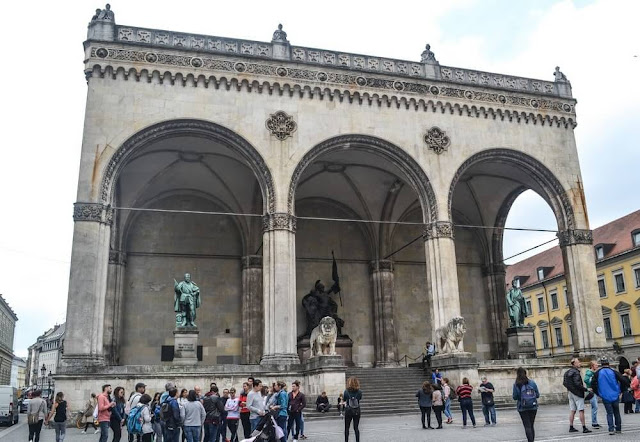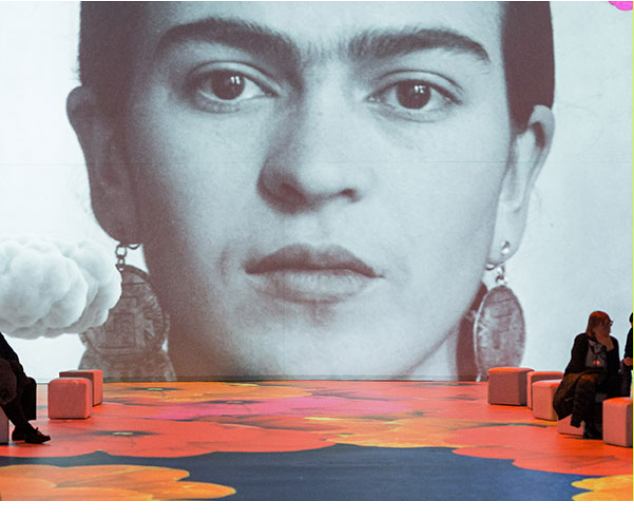The 10 best things to see in Munich.
 So what else can I do in a few days in Munich?
So what else can I do in a few days in Munich?
1. Explore the English Garden
2.Visit the Residenz
3. Shop at the Viktualienmarkt
4. Visit Marienplatz
The Glockenspiel sounds at 11am, noon and 5pm so be sure to time your visit there to see the 12 minute show of motorised figures twirling around the inside of the tower. Some say it is corny – I say, this is an expression of art and technology from the past that you do not see these days and is definitely worth a look, in fact, to miss it, would be to miss the heart of Munich! The short show depicts several significant stories from the history of Munich. You can also watch the show enjoying a drink and meal at the famous Café Glockenspiel, which boasts spectacular views over Marienplatz. However it is very popular to do this, so reservations are advised.
During WWII, the Old Town House (Altes Rathaus) was so badly damaged, the rebuild meant that many original features are now missing, or in some cases, just replicated. Look closely at the building, and what looks like stonework is actually concrete with a 'brick look' stenciled on. You will see this on many buildings in Munich as they were repaired on a tight budget in time for the 1972 Summer Olympics.
5. The Churches
Munich has some incredible churches. Even if you have already traveled Europe prior to reaching Munich- these churches are worth a look and will be different from the many other famous churches you have seen in Italy and France.Our Dear Lady (Frauenkirche) is perhaps the most famous church, with its two very distinctive towers (Stasi and Blasi). Dating back to the 15th century, it took almost 20 years to build and is based on the Dome of the Rock in Jerusalem. It is significant because there is a rule in Munich that no building is to surpass the Frauenkirche in height. The southern tower is almost 100 m tall. Although heavily damaged during the war, it has been rebuilt with fewer embellishments than the original, however, these are being reinstated over time.
Like other churches, you can go to the top of the church for amazing views via the south tower, and the good news is, they have a lift! For a small fee, once up in the viewing tower, you will see several different views with panorama descriptions so you know what you are looking at.
Many of the other significant churches are located nearby making it easy to see others, and all are worth a visit. Many have towers for amazing views, however, it is worth noting that only the Frauenkirche has a lift.
Saint Michaels Church (Michaelskirche), is located in the pedestrian zone between Karlsplatz-Stachus and Marienplatz. Modeled on “il Gesu” in Rome, its cantilever barrel-vaulted ceiling is, at more than 20m, the world’s second-largest after St. Peter’s Basilica in Rome. It is the largest Renaissance church north of the Alps.
The distinctive white and pink exterior is adorned with statues of the Wittelsbach dynasty forming a family tree. It is also the burial place of Ludwig II, the Fairytale King, and other royalty of Bavaria. The interior is stunning so well worth a look.
If you want a fantastic view of Marienplatz and the Rathaus- then make the tricky trip up the tower of the oldest church, St.Peter’s Church. Affectionately called ‘Alter Peter’ - it is the oldest recorded parish in Munich, originally built in 1158, but rebuilt and dedicated in 1368. The church is a bit of a ‘patchwork quilt’ having being built on in different styles over the years- including romanesque, gothic, renaissance and baroque! The interior is well worth the visit even if you can't make the tower climb.
The tower is 91 m (299 feet) high. You should note that the stairs are narrow and arduous, so if have limited mobility, it is not for you, and if you do you arrive at the top, the terrace is very narrow as well. However, if you can make it, you will be rewarded with amazing views.
6. Nymphenburg Palace
7. The Deutsches Museum
9. The Olympic Park
The Olympic Park built for the 1972 Olympics is now a popular park for locals and tourists alike. You can take a cable car ride, visit the Olympic Tower, and explore the grounds. The “Incisions” (Einschnitt) memorial is a pavilion housing a multimedia display that commemorates the twelve victims of the 1972 Olympic massacre and outlines the contemporary historic background to the incident. Well worth a look.10. Visit the Hofbräuhaus
The Hofbräuhaus is a popular beer hall in Munich and is a great place to enjoy some of the local beers. It also offers traditional Bavarian food such as sausages and pretzels. Don’t expect gourmet - just traditional food made the same way it has for hundreds of years. Having said that, it is definitely a fun atmosphere and it is definitely livelier at night that during the day (except during Oktoberfest when it is crazy all day!!). There are several other historic beer halls nearby that are equally historic and less touristy - some date back to the 12th and 13th centuries (my suggestion is to try the historic J.W. Augustiner Brau est.1328). If you are a beer aficionado - it is worth visiting those associated with their own breweries to try their craft brew lines. Tip: Don't try and ‘souvenir’ a bier stein from here or anywhere - if you want one- buy one from the gift shop- they host a range of souvenirs. The staff are very aware of the ’souvenir value’ of their bier steins and are watchful. They will not hesitate to ‘follow up’ with you if your bags or pockets are bulging!Personally, I found the Hofbräuhaus too touristy, and there are plenty of other historic beer halls to visit in this city- but hey- why not visit them all and decide for yourself!




























.jpg)











